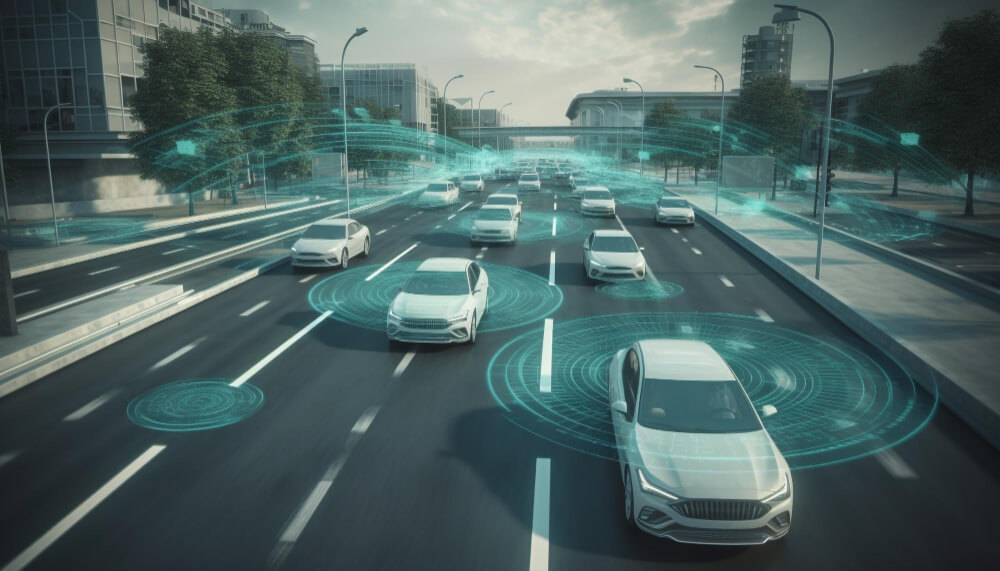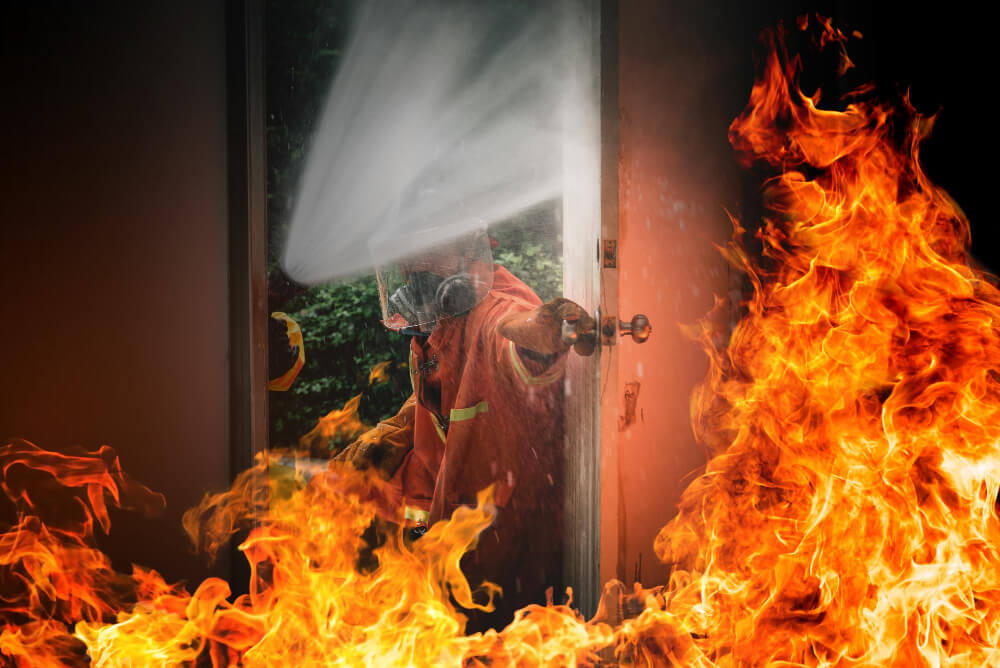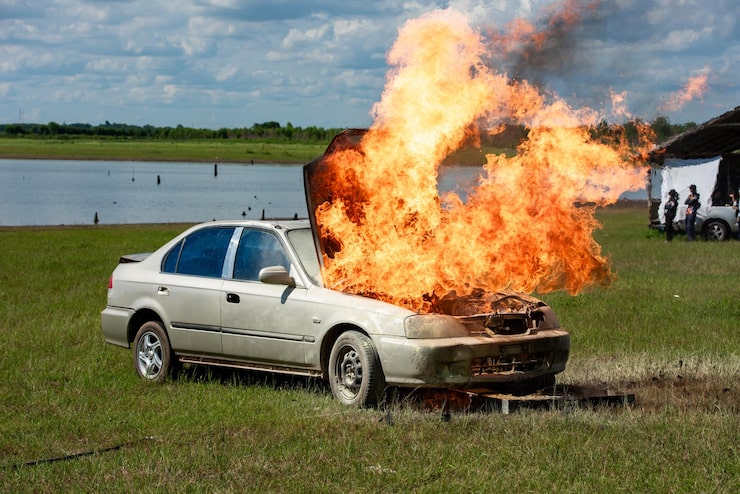
Harnessing Intelligent Sensors for Safer Mobility
The automotive industry is in transition, where proactive safety is as important as fuel efficiency and performance. Fires from overheated electronics, high-voltage batteries, and short circuits should be counteracted by intelligent fire detection systems and backed up with thermal runaway prevention (Marinagha et al). Fire Safety Journal argue that decades of work in safety science demonstrate that risk is significantly reduced by algorithms, sensor fusion, and smart suppression. This is where Auto Burn Stop makes a difference, with microprocessors, temperature probes, and communication devices to find and extinguish fires in their infancy. When combined into one system, smart fire detection with thermal runaway prevention and Auto Burn Stop provides the proactive advantage that manufacturers and fleets need to remain fast movers in the evolution of safety.
Distributed Sensor Networks in Vehicles
Dense sensors are required by new vehicle designs, and the key is intelligent fire detection. Gas monitors, acoustic sensors, and IR sensors work together to sense the first indications of combustion. Together with Auto Burn Stop, these systems form a multi-barrier defense. Intelligent fire detection on the engine, battery, and wiring harness can flag potential issues before they become a problem. This improves the ability to avoid thermal runaway by detecting gases and heat fluxes seconds to minutes earlier than existing methods. Auto Burn Stop collects the data, which trains predictive models; therefore, smart fire detection becomes smarter with each new version! With wider fleet adoption, thermal runaway prevention becomes standard, and Auto Burn Stop guarantees early, accurate response with the science of prevention. This confluence ensures that automobiles evolve into intelligent guardians of our health, rather than simply a mode of transport.
Thermal Runaway Prevention in Electric Vehicles
The issues of Electric Vehicles (EVs) have added more difficulties to the field of fire safety, making thermal runaway prevention the main focus. High-capacity lithium-ion packs tend to fail catastrophically if not managed properly. Research has already verified that monitoring vent-gas signatures and electrolyte breakdown leads to early action (NTSB, 2024). Auto Burn Stop incorporates intelligent fire detection sensors inside the battery enclosure to discharge when gases and temperature exceed safe levels. With accurate algorithms, thermal runaway prevention becomes predictive rather than reactive. Each fire logged makes detection accuracy better, and Auto Burn Stop keeps improving at suppression. Paired together, intelligent fire detection promotes quick anomaly identification, thermal runaway prevention discourages spread, and Auto Burn Stop delivers dependable operation. This collaboration creates a science-driven context in which electric mobility develops safely, in compliance with both technical regulations and consumer confidence.
Predictive Algorithms for Fire Safety
Algorithms turn raw data into action. Using classification and machine learning reduces false positive alarms while retaining high sensitivity for intelligent fire detection. Auto Burn Stop also incorporates predictive models into sensors operating across a vehicle thousands of times per second. This ensures that thermal runaway prevention measures engage only when they are truly needed, and not sooner. With each event recorded by Auto Burn Stop, the predictive model strengthens over time, which in turn enhances the accuracy and cost-efficiency of intelligent fire detection. For carmakers, this feature provides a competitive edge: systems combining thermal runaway prevention with Auto Burn Stop are rated more secure, and consumers gain confidence. The net effect is an ecosystem where smart fire detection fuels data into learning loops to inform predictive operations, thermal runaway prevention translates to resilience, and Auto Burn Stop anchors the full predictive system.
Connectivity and Emergency Response Integration
The combination of intelligent fire detection and connectivity creates a powerful emergency management solution. Through GSM and GPRS modules, Auto Burn Stop alerts response centers in real time. The alerts specify whether thermal runaway prevention has been triggered, allowing responders to arrive on the scene equipped with the proper suppression methods. Fleets are also provided with additional insight, since every smart fire detection event captured by Auto Burn Stop educates central databases. This transforms thermal runaway prevention from a vehicle-level solution into a fleet-wide safety network. With predictive analytics, future risk is detected earlier, enhancing smart fire detection accuracy. By positioning Auto Burn Stop as both safety feature and data source, companies gain regulatory trust while creating smarter, safer roads where thermal runaway prevention is inherent, not incidental.
Standards and Scientific Validation
Intelligent fire detection adoption relies on stringent standards. CSA, UL, and Transport Canada mandate documented testing under simulated fire conditions. Auto Burn Stop is subjected to extensive verification, demonstrating chemical safety, electronics integrity, and suppression efficacy. Compliance with these standards ensures that thermal runaway prevention is aligned with international standards. Peer-reviewed studies (ScienceDirect, 2025) highlight reproducibility as the foundation of trust, demonstrating that intelligent fire detection and thermal runaway prevention must be consistent over thousands of test cycles. Manufacturers using Auto Burn Stop can provide traceable results and certification, ensuring that the system is compliant with scientific and regulatory requirements. By integrating validated intelligent fire detection, proven thermal runaway prevention, and certified Auto Burn Stop, the industry adopts a new standard for proactive automotive safety.
Conclusion
This is beyond innovation; it is the cornerstone of tomorrow’s vehicle safety. By combining intelligent fire detection with thermal runaway prevention, cars acquire foresight instead of hindsight. Auto Burn Stop is the embodiment of applied science going from laboratory research to practical protection. Each layer of safety, sensor networks, predictive algorithms, connected telemetry, builds resilience. For manufacturers, embracing intelligent fire detection guarantees leadership. For regulators, requiring thermal runaway prevention raises standards. For fleets, adopting Auto Burn Stop minimizes risk, downtime, and liability. Collectively, these components make fire safety not an afterthought but an embedded intelligence system. The message is straightforward: the future is for those who integrate intelligent fire detection, systematize thermal runaway prevention, and trust Auto Burn Stop to keep cars one step ahead of catastrophe.



